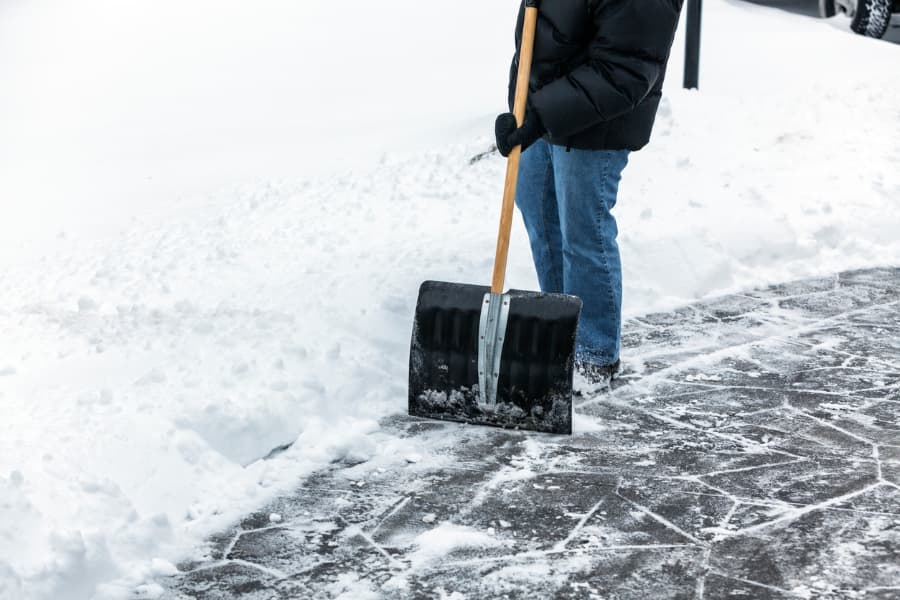
Pouring Concrete In Cold Weather
Pouring concrete for any construction job takes a lot of preparation but pouring concrete in cold weather presents additional challenges. When you pour concrete in colder temperatures, it must be protected from freezing shortly after it’s been poured. Fresh concrete that’s frozen during the first 24 hours can lose 50% of its cured strength. There are various precautions you can take to ensure concrete installed during the winter performs just as well as concrete installed at any other time of the year.
Cold Weather Concrete Pouring Is Different
Concrete sets much slower when it’s cold. The American Concrete Institute provides guidelines for cold weather concreting, which provides concrete producers and contractors with some of the best ways to protect concrete when temperatures drop.
The primary objective is to keep the concrete warm for the first 48 hours to promote normal strength development. The concrete’s temperature must be equal to or greater than 40 degrees Fahrenheit or the curing process slows down or may even stop altogether. Concrete must set before being exposed to freezing temperatures, so it develops the required strength to safely remove forms, prevent cracking, and support the structure’s intended function.
Tips For Pouring Concrete In Cold Weather
You’ll find numerous tips for pouring concrete in cold weather to prevent curing issues and ensure it acquires the required design strength. Before you contemplate concreting, you must determine the cold weather protections required for the type of concrete mix you’ll be using on your project. Consider a heated concrete mix, ask about adding an accelerator to the mix to speed up setting time, or request a low-slump concrete with minimal water to cement ratio to reduce bleeding and decrease setting time.
Once you’ve chosen the type of concrete you’ll be using, learn any special considerations or strength requirements for the concrete, so you’re properly prepared to protect it at specific temperatures. Keep a precise record of concrete temperature and exterior temperature throughout the project, so you’ll know exactly when to make these special considerations. Other tips include:
- Use heaters to thaw frozen ground or melt snow and ice before pouring concrete
- Ensure concrete has the appropriate amount of air entrained voids to resist the effects of freezing and thawing
- Cover concrete with curing blankets during the hydration period to hold in heat, prevent freezing, and speed up the curing process
- Use insulation blankets or windproof and weatherproof heated enclosures for three to seven days to maintain concrete temperatures above 50 degrees Fahrenheit
- After using blankets or enclosures, keep concrete temperatures above 40 degrees Fahrenheit for a minimum of four more days
- Cool concrete surfaces gradually after the protection period ends to decrease the likelihood of cracking due to thermal stresses
- Avoid starting the final finishing process with bleed water present
- Use a vacuum or squeegee to remove standing bleed water that doesn’t evaporate
Get Quality Concrete For Cold Weather Pours
Best Concrete Mix Corp. in Flushing, New York, has been a leading ready-mix concrete supplier serving contractors in the New York City area for over 27 years. We can help you choose the correct slump, aggregates, and accelerator for pouring concrete in cold weather, so your concrete provides the right strength for your project. We’ll deliver your high-performance concrete mix directly to your job site from one of our two fully modernized production facilities, so you can count on receiving it when you need it. Contact us today at 718-539-5946 with your concrete pouring questions or to place your order.


